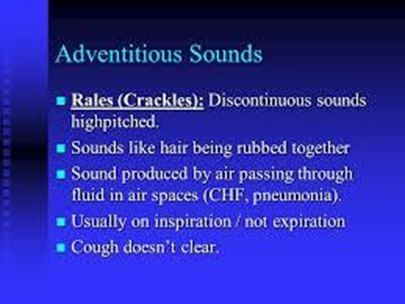A nurse is assisting with teaching a class about documenting blood pressure. The nurse should include to document which of the following information?
The site where the blood pressure was obtained.
Interventions implemented in response to a client's blood pressure.
A client's position when the blood pressure was obtained.
The frequency in which a blood pressure is taken.
A client's response to interventions implemented.
Correct Answer : A,B,C,D,E
A. The site where the blood pressure was obtained is important to document because blood pressure measurements can differ significantly between different parts of the body (e.g., arm versus thigh). Documenting the site ensures that future measurements can be compared appropriately.
B. Interventions implemented in response to a client's blood pressure need documentation to track what actions were taken and whether these actions had the intended effect on the patient's health status. This helps in assessing the efficacy of interventions.
C. A client's position when the blood pressure was obtained affects the readings; measurements might differ when taken in positions such as lying, sitting, or
standing. Accurate documentation of position helps in ensuring that readings are interpreted correctly.
D. The frequency in which a blood pressure is taken provides context for understanding how the patient’s blood pressure is trending over time, which is critical for ongoing management and therapeutic decisions, especially in unstable or critical patients.
E. A client's response to interventions implemented should be documented to evaluate whether the treatment plan needs adjustments and to understand how the patient is coping with the treatment. This documentation is crucial for patient safety and care continuity.
Nursing Test Bank
Naxlex Comprehensive Predictor Exams
Related Questions
Correct Answer is B
Explanation
A: Hypoglycemia does not directly correlate with a lower heart rate.
B: A heart rate of 56/min may indicate bradycardia, which can lead to symptoms like dizziness due to decreased cardiac output and subsequently reduced cerebral perfusion.
C: A fever would typically increase the heart rate, not decrease it.
D: Cigarette smoking is more commonly associated with an increased heart rate due to stimulants like nicotine.
Correct Answer is D
Explanation
A: Sonorous wheezes are low-pitched sounds and do not describe fine rales.
B: Musical or whistling sounds typically describe wheezes which are continuous and not the discontinuous sound of rales.
C: Noisy, snoring sounds are characteristic of rhonchi, not rales.
D: Fine rales are high-pitched, brief, and discontinuous crackling sounds that are often likened to the sound of hair being rubbed between fingers, indicative of fluid in the small airways.

Whether you are a student looking to ace your exams or a practicing nurse seeking to enhance your expertise , our nursing education contents will empower you with the confidence and competence to make a difference in the lives of patients and become a respected leader in the healthcare field.
Visit Naxlex, invest in your future and unlock endless possibilities with our unparalleled nursing education contents today
Report Wrong Answer on the Current Question
Do you disagree with the answer? If yes, what is your expected answer? Explain.
Kindly be descriptive with the issue you are facing.
